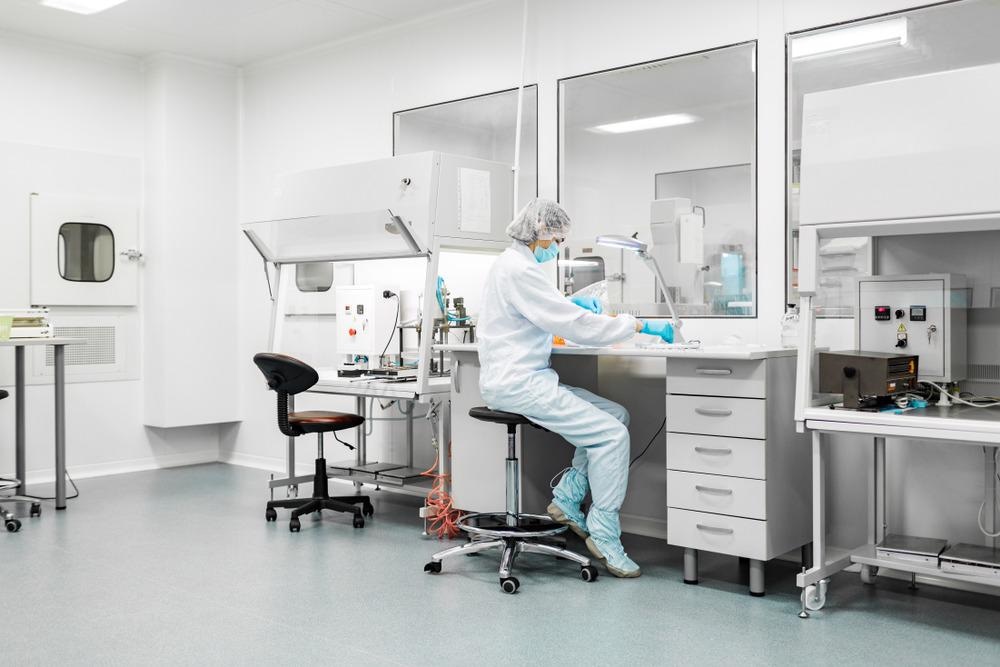 By Surbhi JainReviewed by Susha Cheriyedath, M.Sc.Mar 2 2022
By Surbhi JainReviewed by Susha Cheriyedath, M.Sc.Mar 2 2022In a review recently published in the journal Biomaterials, the researchers presented a detailed discussion regarding smart biomaterial-based platforms. They also discussed the effect of cells on the controlling parameters of such platforms.

Study: Smart biomaterial platforms: Controlling and being controlled by cells. Image Credit: Sergei Anishchenko/Shutterstock.com
Background
Dynamic functionality is becoming a more common biomaterials design criterion across a wide range of research and application areas such as biocompatibility, cytocompatibility, controlled degradability, long-term stability, and drug release kinetics. Despite considerable effort, establishing dynamic functionality while maintaining other design objectives remains a substantial difficulty. Reversible dynamic functionality, as opposed to one-way dynamic functioning, is of great importance, but it has proven particularly difficult to achieve.
Such reversible functionality could help researchers bridge the gap between the dynamic portfolio of in vivo biomechanical and biological processes like cell-extracellular matrix (ECM) interactions and cell traction. Many extracellular matrices (ECMs) undergo in vivo remodeling during development, homeostasis, disease, and wound healing, but synthetic ECM mimics used in basic and applied biomedical science are generally limited to materials with fixed properties that cannot replicate the dynamic in vivo microenvironment.
About the Study
In the present study, the authors reviewed the dynamic materials that were used to control the cell activity as well as the static biomaterial structures. They also discussed the experimental and computational methodologies and qualities that could help guide future improvements in reversible dynamic materials.
This review provided an overview of how to combine the reversibility of smart materials with the in-depth dynamic cell activity explored by static polymers to create smart bi-directional ECM-based platforms that could communicate with cells reversibly and repeatedly. It also provided an overview of (i) the requirement of smart ECM mimics, (ii) the need for a better understanding of ECM/cell interactions for the advancement of applied and fundamental biomedical science, and (iii) the growing options for bridging the gap between static ECM materials used to study cell activity and biomimetic, dynamic, and bioinspired smart ECM materials.
In this article, the authors looked at the smart materials that can change their properties repeatedly and reversibly, making them a more biologically relevant platform for studying and controlling cell behavior. They highlighted recent findings which had adopted and created smart materials-based technologies that allow reversible administration of a stimulus with the ability to regulate cell fate. The investigations were categorized depending on whether the applied stimulus causes biochemical property changes or mechanical property changes.
Observations
As part of their review, the researchers observed that when the NIR-irradiation was turned on, the poly n-isopropylacrylamide (pNIPAM) surface became hydrophobic and cell sticky, but when it was turned off, the surface became hydrophilic at 26oC, resulting in the detachment of >95% of the cells from the hydrophilic substrate.
More from AZoM: Analyzing Scale of Multi-Asperity Wear with AFM Techniques
On the electrospun pNIPAM with the substrate kept at 31oC, MC3T3-E1 (3T3) and EMT6 (cancerous tumor) cells created confluent sheets. It was also observed in one of the studies that within 5 minutes of cooling, 80% of the cells could be separated from the surface. Cell viability in a soft-to-low stiffness network (with modulus varying from hundreds of Pa to less than 5 kPa) was found to be high for a culture of up to 14 days, according to existing data in the area of encapsulated cells in a 3D culture setup.
Furthermore, it was found that only a few studies were able to incorporate physiologically appropriate time scales that govern biological processes and accompanying cellular behavior into the design of smart materials. In the context of biologically derived materials used as ECM constructs, a better understanding of the signaling pathways that dominate such feedback loops in cell-cell and cell-ECM systems was required for unlocking significant advances.
Some studies suggested that the development of smart materials that can either instill cell feedback or allow for external triggers that can mimic or contradict the feedback was critical for the advancement of this multidisciplinary research field. Additionally, 3D images of fluorescent beads and cell-specific protrusions produced from confocal microscopy were frequently used to provide predictive data to machine learning algorithms.
Conclusions
In conclusion, this review elucidated the advancements in the development of smart materials used to reversibly manipulate cell activity, as well as state-of-the-art methods to study cell activity on static substrates, with a focus on using those methods which can be utilized to investigate the potential remodeling of a smart ECM by cell activity.
The authors emphasized that the development of smart materials has escalated owing to the research efforts aimed at stimulating the in vivo environment of cells and examining the influence of physiologically relevant stimuli on the cell-ECM interaction. They also believe that smart materials with dynamically programmable characteristics can be developed that can either inhibit or encourage cell remodeling.
Disclaimer: The views expressed here are those of the author expressed in their private capacity and do not necessarily represent the views of AZoM.com Limited T/A AZoNetwork the owner and operator of this website. This disclaimer forms part of the Terms and conditions of use of this website.
Source:
Narkar, A. R., Tong, Z., Soman, P., et al. Smart biomaterial platforms: Controlling and being controlled by cells. Biomaterials 121450 (2022). https://www.sciencedirect.com/science/article/abs/pii/S0142961222000898